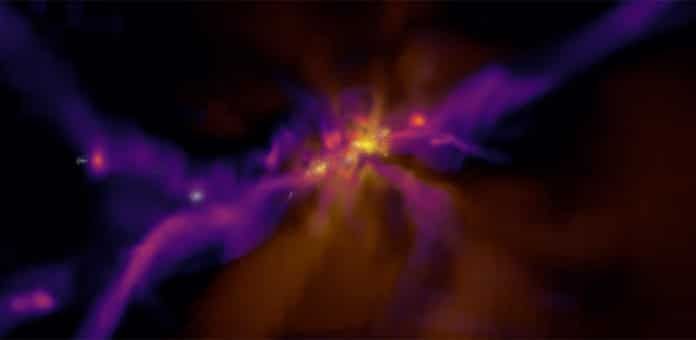Locating the epoch when the Universe was first bathed in starlight is a keen puzzle in cosmology. Also known as cosmic dawn, it is one of the most important gaps in our understanding of our Universe’s history.
A new study by the University of Cambridge and University College London (UCL) researchers suggests that the cosmic dawn occurred 250 million to 350 million years after the big bang.
Astronomers from the University of California-Santa Cruz, the University of California, and the University of Texas also took part in this study.
Researchers reached this conclusion after examined six of the most distant galaxies currently known. The light from these galaxies takes most of the universe’s lifetime to reach us. The proximity of these galaxies corresponded to a ‘look back’ time of more than 13 billion years ago, when the universe was only 550 million years old.
Researchers analyzed the images of these galaxies, captured by Hubble and Spitzer Space Telescopes. By estimating the age of galaxies, which range from 200 to 300 million years, researchers estimated when their stars first formed.
Lead author Dr. Nicolas Laporte from Cambridge’s Institute of Astronomy said, “Theorists speculate that the universe was a dark place for the first few hundred million years before the first stars and galaxies formed. Witnessing the moment when the universe was first bathed in starlight is a major quest in astronomy.”
“Our observations indicate that cosmic dawn occurred between 250 and 350 million years after the beginning of the universe, and, at the time of their formation, galaxies such as the ones we studied would have been sufficiently luminous to be seen with the James Webb Space Telescope.”
The starlight from these galaxies acts as a biomarker of their energy distribution. It indicates the presence of atomic hydrogen in their stellar atmospheres. This provides an estimate of the age of the stars they contain.
Co-author Dr. Romain Meyer from UCL and the Max Planck Institute for Astronomy said, “This age indicator is used to date stars in our neighborhood in the Milky Way, but it can also be used to date extremely remote galaxies, seen at a very early period of the universe. Using this indicator, we can infer that, even at these early times, our galaxies are between 200 and 300 million years old.”
While examining data from Hubble and Spitzer, researchers estimated the ‘redshift’ of each galaxy. To do so, they undertook spectroscopic measurements using the full armory of ground-based telescopes. These measurements enabled the team to confirm that looking at these galaxies corresponded to looking back to a time when the universe was 550 million years old.
Co-author Professor Richard Ellis from UCL said, “Over the last decade, astronomers had pushed back the frontiers of what we can observe to a time when the universe was only 4% of its present age. However, due to the limited transparency of Earth’s atmosphere and capabilities of the Hubble and Spitzer Space Telescopes, we have reached our limit.”
“We now eagerly await the launch of the James Webb Space Telescope, which we believe can directly witness cosmic dawn. The quest to see this important moment in the universe’s history has been a holy grail in astronomy for decades. Since we are made of material processed in stars, this is in one sense the search for our origins.”
Journal Reference:
- N Laporte et al. ‘Probing Cosmic Dawn: Ages and Star Formation Histories of Candidate z ≥ 9 Galaxies.’ The Monthly Notices of the Royal Astronomical Society (2021). DOI: 10.1093/mnras/stab1239
